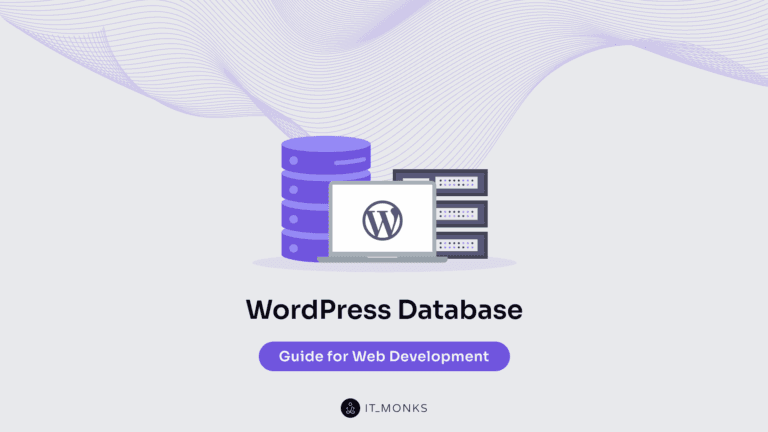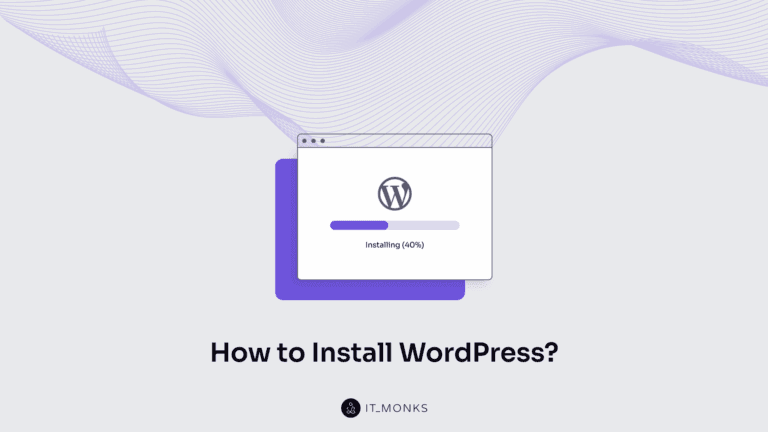Make Your WordPress Site Safer with File Upload Vulnerability Prevention
Table of Contents
There are many ways for hackers to hijack your website. One of them is through file upload vulnerability, which can provide them with full access to the sensitive data on your site. Suppose an attacker finds this vulnerability on your site. In that case, they can cause severe damage to the files in your database, your data, and pages, steal your sensitive information, access your clients’ details and start sending them spam. To prevent this from parenting, you need to take care of file upload vulnerability on your site.
Besides facing all the issues mentioned above, Google may also blacklist your website, preventing web users from reaching it. In case your WordPress account gets hacked, your service provider may also suspend your account, and it would cause you a lot of time and effort to get it back on track.
No worries! You can prevent file upload vulnerability while taking the steps described in this article. We’ll highlight the most common WordPress file upload vulnerabilities and list the most common ways that will keep your site protected against attackers.
Getting Familiar with WordPress File Upload Vulnerability
Depending on the niche to which your WordPress website belongs, you may update it with the file upload functionality. For example, if it’s a job portal – people may submit their resumes while uploading files to your site. If it’s a banking website, you may ask your clients to upload their documents to prove their identity.
When such files are uploaded to a WordPress site, the system checks the file and stores it in the Uploads directory. The files being upload by file uploaders come in the format that cannot execute any commands without showing any error messages.
The accepted file formats that cannot be executed and are available only for view mode include:
- Images should be uploaded in JPEG format.
- Documents should be in Docx or PDF.
- Videos should be in mp3 and mp4.
All of these formats are non-executable. It means that even any of the uploaded files features malicious code, it cannot execute any further commands on your site. If there is a file upload vulnerability on your site, the file uploader might start accepting unrestricted file uploads. Once hackers notice this malfunction, they may start uploading files in PHP, JavaScript, and exe formats, which feature executable codes that can run malicious commands on your site. This is known as the WordPress file upload vulnerability.
To handle file upload vulnerability prevention, it’s important to know how this works and what steps you should take to protect your website against it. Before we proceed to the steps that should be taken to avoid file vulnerability, let’s take a closer look at the major types of WordPress file vulnerabilities.
WordPress File Upload Vulnerability Types
As we’ve earlier mentioned, there are specific file types that one can upload to WordPress. However, if there is a malfunction in the file upload field, hackers will upload executable files to your site without any issues. If the worst scenario happens, there are two generally accepted ways for the vulnerable upload field to accept malicious files.
- Local file vulnerability, meaning that hackers can upload malicious files directly to your site.
- Remote upload vulnerability. In this case, the website requests a user to upload files on the cloud storage and share the file location in the form of an URL.
File Upload Security Issues
For a more effective WordPress file upload vulnerability prevention, you should be aware of the major kinds of risks that your may face while uploading files to your site.
- Uploading extremely large files can result in application failures. Hackers can execute DDoS or botnet attacks that upload many large files at the same time. As a result, a website breaks down because it can’t execute simultaneous uploads of large files.
- Uploading malicious content to change the normal application behavior. It may include malware, exploits, and malicious scripts that can steal precious data on your site.
- While specifying incorrect metadata (like the file path or name), the application may copy the file to the wrong location in the database, resulting in its misleading behavior. An attacker may overwrite meaningful system configurations while adding control characters in the file name.
- Overwriting an existing file while uploading a new file with the same name and extensions. An attacker can use this function to upload a file that will launch server-side attacks or initiate the process of modifying the security settings of a server.
- While uploading files to your site, the system verifies if the specific extension is added to the extensions blacklist. If the file is not on the list, it gets rejected. Hackers may upload the files that are not added to the extensions blacklist to mislead the security system.
- While uploading files through third-party resources and cloud storage, a website may become a target of snooping attacks. It means that an attacker listens between two machines on the network (they often target traffic from cloud storage). To protect your website from snooping attacks, always use a secure Internet connection and upload encrypted files.
There are several common ways for hackers to exploit vulnerabilities on WordPress sites:
- Hackers take multiple attempts to find weak points of websites to target their vulnerabilities;
- Outdated themes and plugins are are most common vulnerabilities of WordPress sites. That’s why developers often release updates once they learn about vulnerabilities in their products;
- Hackers look after the descriptions of updates released for plugins and themes and target the weak points.
More importantly, hackers target those websites that do not get updated. The point is that they try to attack thousands of websites at the same time. In rare cases, hackers will target one specific website. Websites running on old WordPress versions are more vulnerable, which makes them an easier target for attackers.
There are lots of extensions letting you find out what plugins a specific website uses. Let’s assume that you use a plugin that has been recently updated, but you didn’t install the update for some reason. When a hacker discovers that your site uses a certain plugin, they will target the vulnerabilities the plugin developers specified in the update. If your site uses an old version of the plugin, you risk being an easy target for malicious attacks.
WordPress File Upload Vulnerability Prevention Tips
File upload vulnerabilities can lead to huge technical issues on your site. However, if you do everything right today, you can protect your site against hacking attacks.
Update your site
As we’ve said earlier, if you do not install the latest updates of the plugins or themes used on your site or the WordPress version on which your site is running, you become an easy target for hackers. If the most recent WordPress update released file upload vulnerability fixes, installing the respective update on your site lets you protect your site against attacks of this kind.
WordPress often releases updates to the CMS. Although checking them out and installing them on your site might cause your site a malfunction, it’s worth your time to look up what’s new on a regular basis.
Install a WordPress Security Plugin
Adding a WordPress security plugin to your site is one of the best time-tested approaches to protecting your site. In case you do not notice the release of a new plugin or theme update, the security plugin will serve as an extra security layer for your site.
There is a wide choice of WordPress security plugins available for free or pro access. You may go ahead and see the full list in one of our previously published articles.
For example, WordFence WordPress security plugin features a built-in firewall that stops malicious traffic from reaching your site. MalCare is a security scanner and malware cleaner that scans and detects the potential risks and cleans your website from them in a matter of minutes.
Security WordPress plugins protect your site through a WordPress firewall, which blocks potential malware from accessing your site, and lets only good traffic reach your web resource. Thus, even if there are security vulnerabilities on your site, a WordPress firewall will prevent hackers from accessing it.
Buy Themes And Plugins Only from Reputable Marketplaces
Do not buy from unfamiliar third-party websites just because they sell themes or plugins at a lower price. Some of the most popular marketplaces that have earned the reputation of reliable themes and plugins providers are CodeCanyon, Mojo Marketplace, Envato, etc. Such marketplaces have strict certificate protocols that web developers should follow if they want to sell their products there.
Disable File Uploading
If your business doesn’t depend a lot on the files that customers add through the file uploader, you’d better consider disabling it on your site. Unless you run a job recruitment online portal, deleting the file upload function should be the best file upload vulnerability prevention step.
Change Location of Uploaded Files
Here comes the last but not the least important step to prevent file upload vulnerabilities on your site. By default, all files that are uploaded to your site are stored in the Uploads folder in the public_html directory, where all of your site’s critical files are stored. Thus, when hackers upload malicious files to your Uploads folder, they can gain access to the entire public_html directory, or your entire website when said in simple language. When the storage folder moves to a different place, you make things more complicated for hackers to attack your site. Thus, you have more time to protect it.
Please mind that this file upload vulnerability prevention step should be handled only by experienced WordPress developers. If you are not familiar with the structure of the CMS and various tricks on how to manage it for maximum efficiency, then you’d better skip this step. Another solution would be to find a webmaster on whom you can rely and who will get the job done on the professional level.
Bottom Line
Taking care of the file upload vulnerability prevention is a wise step towards making your site a safer place on the web. Even though you take all the needed steps that would protect your site against hacking attacks, it’s also important to implement additional steps to improve your site’s security. It includes keeping WordPress CMS always updated. The same rule is applied to all plugins and themes that your site uses. Installing a security WordPress plugin will help you scan your site and prevent or clear potential security breaches. And finally, while implementing site hardening measures you can ensure that your site is safe and sound.
Hope our file upload vulnerability prevention tips will help you make your site safer and hackers won’t break into it all of a sudden.
Contact
Don't like forms?
Shoot us an email at [email protected]

Send a Project Brief
You need to load content from reCAPTCHA to submit the form. Please note that doing so will share data with third-party providers.
More InformationYou are currently viewing a placeholder content from Turnstile. To access the actual content, click the button below. Please note that doing so will share data with third-party providers.
More InformationYou are currently viewing a placeholder content from Facebook. To access the actual content, click the button below. Please note that doing so will share data with third-party providers.
More InformationYou are currently viewing a placeholder content from Instagram. To access the actual content, click the button below. Please note that doing so will share data with third-party providers.
More InformationYou are currently viewing a placeholder content from X. To access the actual content, click the button below. Please note that doing so will share data with third-party providers.
More Information

